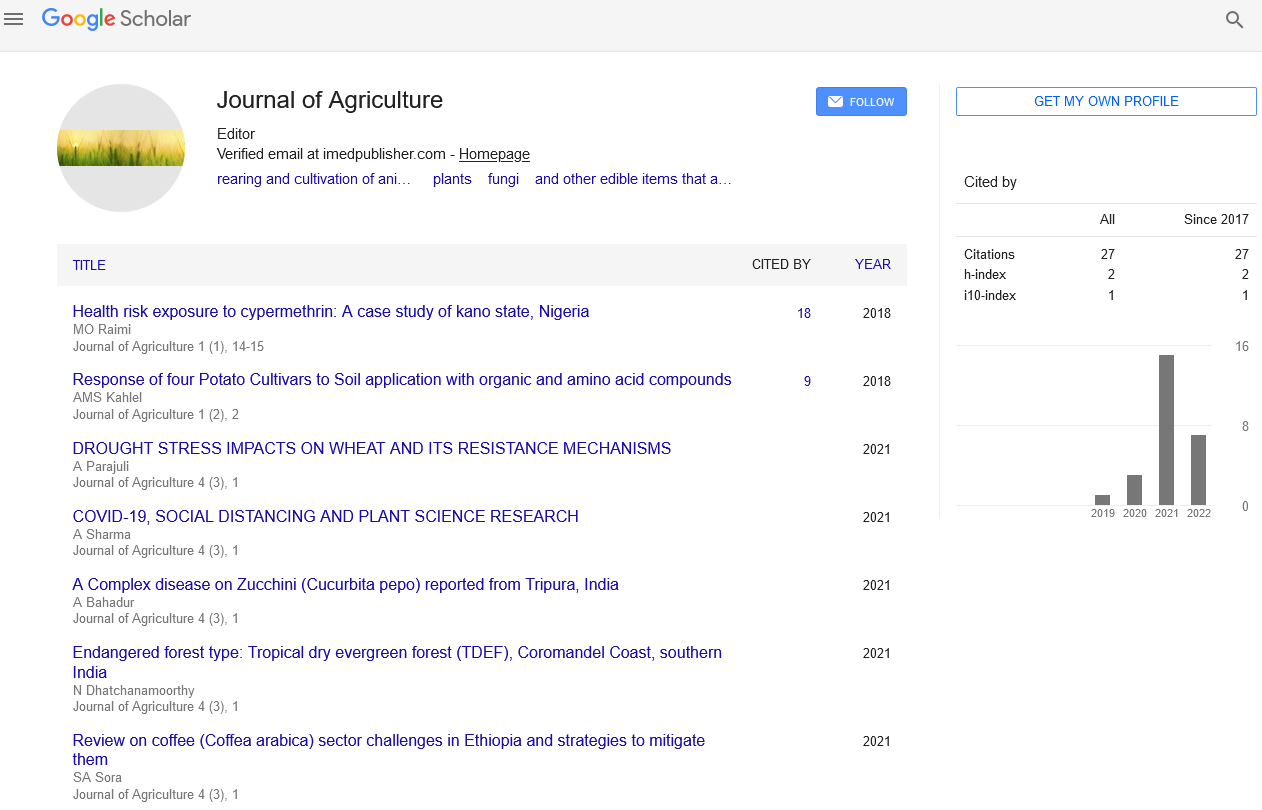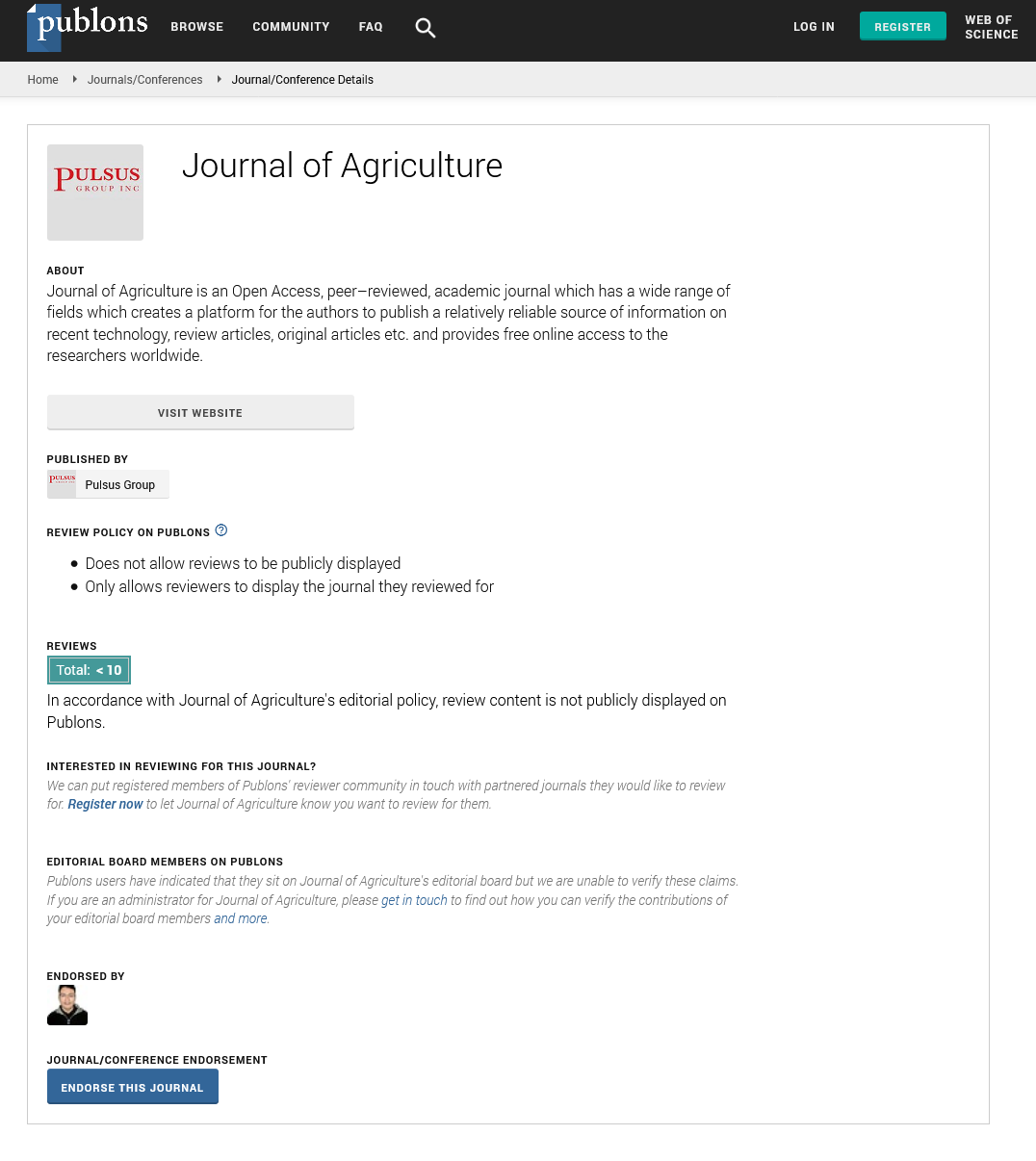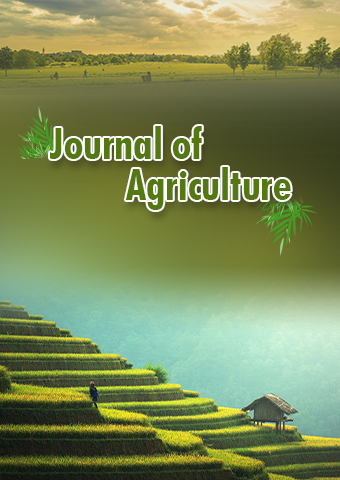Research Article - Journal of Agriculture (2021) Volume 4, Issue 1
Traditional Practice of Medicinal Plants of Euphorbiaceae Growing in Rural Pockets of Sub- District Uklana Mandi (Hisar), Haryana, India
Background: Haryana is northern state ofIndia with power of rural population (65.12 percent) that relies on agriculture and domestic animals for its economy and social welfare (Singh and Pal, 2018).It has hot semi-arid type climatewith average temperature of 24.9° Cand annualrainfall 653 mm (en.climatedata.org.). Main cultivated crops of study area are cotton, mustard, millet, vegetables, legumes etc. Methods: A field study was completed in January 2020 in two villages i.e. Parbhuwala and Budhakhera ofTehsil-Uklana Mandi of districtHisar. Ethnomedicinal information such as vernacular name, therapeutic uses, plant part used, herbal formulation, mode of application has been collected using a well-structured proforma. Findings: The study led to documentation of 9 plant species belonging to Euphorbiaceae family being used to treat 26 human ailments. Leaves were most dominantly used plant partfor all reported species. From collected reports it has been concluded that euphorbiaceous plants are widely used to treat skin ailments and gastrointestinal disorders. Conclusion: Conservation and protection of declining plant species are urgent need and which is well served by documentation of hidden and existing traditional botanical knowledge. The present study will provide important information regarding medicinal description of plants and helps in sustainable maintenance of biodiversity atlocal level. Keywords: Ethnobotany, Herbal formulations, Rural Pockets, Traditional knowledge, Hisar, Haryana. Introduction: The traditional medicinal history of cultural practices and policies among South East Asian countries (i.e. India, China, Thailand, Singaporeand Bangladesh etc.) plays a criticalrole in conservation and sustainable maintenance of medicinally important plant diversity. According to WHO report(2005) a total 75 percent of global population is still dependent on plant productsfortheirprimarynecessities. Nearly, 21,000 plantspecies are used for healthcare purpose worldwide. Approximately, 2500 plant species, 1000 genera and 155 angiospermic families are used as alternative and complementary medicines in India (Yadav et al., 2006; Sujatha, 2020). The scientific description of internal medicines, surgery, diagnosis of diseases, methods of formulations, mode of application, precautionary measures, beneficial and harmful effects of plant based natural products are found in ancient medicinal literature (i.e. Yajur-Veda, Rig-Veda, Sam-Veda, Atharva-Veda, Charaka Samhita, Sushruta Samhita, Bela Samhita, Ashtanaga Sangraha, Ashtanaga Hrdaya, Madhava Nidhana, Bhava Prakasha, Sarngadhara Samhita) in the form of “Shlokas”(Swathi and Rao, 2016; Sen and Chakraborty, 2017). Family Euphorbiaceae (Spurge family)(was named after king of Mauritania- “Euphorbus”) comprises of nearly 7500 plant species belonging to 300 genera, consisting of monoecious, diocious,wild,cultivated,herbs,shrubs,treesandvinesasmajor plants groups (Simpson, 2010; Mwine and Damne, 2011). The economically important plants i.e. Ricinus communis, Jatropha curcus, Hevea brasiliensis, Manihot esculenta; ornamental plants like Euphorbia pulcherrima, Euphorbia esula, Triadica sebifera; medicinal plants such as Acalypha hispida, Croton tiglium, Euphorbia hirta, Euphorbia prostrata, Euphorbia tirculli, Euphorbia nivulia, Euphorbia pepulus, resinifera, Euphorbia royleana, Phyllanthus niruri etc. belongs to spurge family (Islam et al., 2019; Johari and Kumar, 2020; Kasrina and Zukmadini, 2021). Realizing denudation and extinction of plant diversity,remedial steps were taken forward to record, document, conserve, sustainable maintenance and explore the plant based knowledge in studied sites. Material and Method: A total of 100 people volunteered for the interview and 60 informants were screened out of the total interviewees who provided relevant information. Ethnobotanicalinformation regarding medicinal usage of Euphorbiaceous plants was collected from people above 20 years of age. Randomly chosen, 50 people were examined from two villages of district Hisar RESEARCH ARTICLE Euphorbiaceae Growing in Rural Pockets of Sub- District i.e. Budhakhera and Parbhwala. Socioeconomic data on age, sex andeducational qualification ofInformants had alsobeen Table 2: Ethnomedicinal Uses of Reported Plant species of Euphorbiaceae family collected. Demographic details of studied sites and percentage proportion of informants are given in Table 1. Community interactions photographs of survey are given in Figure 1. The Ayurveda-acharya, hakim, traditional practitioners and aged people were given special consideration during as they have vast traditional knowledge regarding herbal formulations. The informantswere categorized into groups i.e. age group, sex, qualification group. Reported plant species that inhabitants have been using for healthcare needs were identified and authenticated using websites; International plant name index, The plants database, The plant list, The plants of world online, Flowers ofIndia,National medicinal plant board ofIndia,The Keralaplants,Thesouth-easternfloraandsomeresearchpapers. Collectedethnobotanicalinformation ofreported plants also listed in Table 2 Figure1:CommunityInteractionsPhotographsof Ethnomedicinal Survey Results: Table 1: Demographic Details of Villages and Informants Discussion: Asperdemographicdetails,male,eldersandilliterateinformants shared more traditional knowledge than other groups. In the present study,a total 9plant species of Euphorbiaceae family have been reported to treat 26 human ailments. Reported plants havealsobeenmentionedbypreviouspublishedwork(Panghal et al. 2010;Yadavand Bhandoria 2012; Kaur andVashistha, 2014; Parul and Vashistha 2015; Singh et al. 2015; Urana, 2015; Singh, 2016; LalandGroach2016; Singhet al.2016;Parul et al.2017; Ashish, 2018; Rani, 2019; Gupta and Malhotra, 2020; Kumar and Khurana 2020). Sr.no Selected Attributes Percentage Proportion of Informants Parbhuwal a Budhakhera 1. Total Informants 60 40 2. 3. Head of Villages Health Infrastructure Baljinder Kaur Dispensary Ramkumar Primary Health Centre 4. Geographical co-ordinates Latitude 29Ë4877ËN 29Ë5020ËN Longitude 75Ë9042ËE 75Ë8553ËE 5. Informant’ s Groups Male 77.78 79.17 Female 22.22 20.83 20-40 years old 5.56 16.67 40- 60 years old 8.33 8.33 60 and above age 86.11 75 Illiterate 83.33 62.5 Literate and Below Matriculation 11.11 20.83 Matriculation and Above 5.56 16.67 Sr.no. Botanical name Local name Plant part used Formulation Mode of Application Treated Ailments/ Diseases 1. Croton bonplandium Baill. Jamalghota Seed Oil Oral Constipation Leaves or Stem Ash/Powder Topical Skin ailments, Scabies, Allergy 2. Euphorbia hirta L. Dudhi Leaves Poultice Topical Skin ailments, Itching, Inflammation, Ringworm Extract Oral Typhoid Whole Part Decoction Oral Asthma, Pneumonia, Cough, Diarrhea 3. Euphorbia prostrata L. Dudhi Whole Part Fresh Juice Oral Diarrhea 4. Euphorbia pulcherrima Willd. Ex. Kotz. Lalpatta Aerial Part Latex Massage Arthritis, Rheumatoid 5. Euphorbia royleana Boiss. Dandathor Apical Part Latex Topical Skin ailments i.e. allergy 6. Phyllanthu s asparulatu s Hutch. Bhumi Amla Leaves Juice Oral Stomach ache, Jaundice 7. Phyllanthus emblica L. Amla Fruit Pickles, Juice, Raw Oral Body weakness, eyesight, night blindness, gastrointestinal disorders, vomiting, cough, 8. Putranjiv a roxburghi i Wall. Putravati Leaves and fruit Tender and fresh Oral Uterus weakness, pyrexia 9. Ricinus communis L. Arandi Leaves Gentle Warmed Tied Arthritis, Rheumatoid, Edema, Swelling, Pain, Sprain feet, Menstrual cramps Extract Topical Skin ailments, burnt part Seed Oil Massage, Oral Arthritis, Rheumatoid, Edema, Swelling, Pain, Constipation EXTENDED ABSTRACTS JournalofAgriculture 3rd International Conference on Plant Science and Agriculture May 05-06, 2021 | Webinar 2021 | Volume 4,Issue 1 Percentage usages of reported plants’ species in terms of types of formulations were; fresh form- 44.44 percent, extract, oil and latex- 22.22 percent each, decoction, poultice, ash and powdered - 11.11 percent each. Percentage usage of reported plants’ species with regard to mode of administration were; orally-77.78 percent, topically -44.44 percent, massage – 22.22 andtied-11.11. Leavesweremostdominantlyusedplantpart among reportedspecies. Discussion: Nearly 75 percent of total informants gained traditional knowledge from their parents, grandparents, neighbors and relatives. It has also been observed that older generation have more experience based knowledge than younger one. Due to rapid changing infrastructure of society atdifferent level, ethnobotanical information is underthreat. Excessive utilization of wild flora results in disturbance oflocal ecosystem of concernedarea. Therefore, there is an urgent need to record the hidden and vanished ethnobotanical information and generate awareness among rural people regarding sustainable maintenance of plants. The preliminary data presented in this paper need more authentications using pharmacological investigation. The collected information will provide a document ofindigenous knowledgeofeuphorbiaceousplantswhichfurthercanbehelp in pharmacology and pharmaceutical studies. Acknowledgement: Authors are highly thankful to the informants who shared valuable information with us. We would also express our gratitude to Mr. Rupinder Kumar who played a vital role in completionofthis study.WearealsothankfultoDr.ArjunDev (survey coordinatorin the selected villages). References: Gupta R,Malhotra C. 2020.An ethnobotanical study of medicinal plants inKarnal cityofHaryana.Journalofcriticalreviews.7(4). Islam S., Ara H., Ahkad K., Uddin M. 2019. A review on medicinal usesofdifferentplantofEuphorbiaceaefamily.Universaljournal of pharmaceutical research. 4(1): 47-51. Johari S and Kumar A. 2020. Euphorbia spp and their use in traditional medicine: a review.World journal of pharmaceutical research. 9(14):1477-1485. Kasrina K and Zukmadini AY. 2021. Ethnobotany study of medicinalplants inBengkuluasamediumof studentlearning: the Euphorbiaceae family. Mathematics and science education international seminar. Journal of physics: conference series: 1731: 1-9. Kaur R, Vashistha BD 2014. Ethnobotanical studies on Karnal district, Haryana, India. International research journal of biological sciences, 3(8): 2278-3202. KumarN, Khurana SMP 2017. Medicinal plant’s wealth of Aravalli hills of Gurgaon district, Haryana, India. Research journal of medicinal plants, 14: 96-103. Lal M, Palria N, Vashistha BD 2017. Floristic diversity and ethnobotanical studies on some parts of southern HaryanaBhiwaniDistrict. Bulletin of environment, pharmacology and life science, 6(2):16-23. Lal M, Groach R 2016. An ethnobotanical study of district Kurukshetra, Haryana, India. International journal of basic and applied biology, 3(4): 266-268. Mwine JT. And Damme PV. 2011. Why do Euphorbiaceae tick as medicnal plants? A review of Euphorbiaceae family and its medicinal features. Journal of medicinal plants research. 5(5): 652-662. Panghal M, Arya V,Yadav S, Kumar S, Yadav JP. 2010. Indigenous knowledge of medicinal plants used by saperas community of Khetawas, Jhajjar district, Hrayan, India. Journal of ethnobiology and ethnomedicine,6(4). Parul,GroachR, Lal M,Vashistha BD2017. Ethnobotanical survey of traditional medicine practice to treat digestive disorders of Gurugram District, Haryana, India. International journal of developmentalresearch, 7(11): 16623-16626. Parul, Vashistha BD 2017. An ethnobotanical study of plains of Yamuna-nagar District, Haryana. International journal of innovative research in science, engineering and technology, 4(1): 18600-18607. Rani J. 2019. Ethnobotanical survey and traditional uses of medicinalplants inJinddistrictofHaryana,India.Plantarchives, 19(1): 1241-1247. Sen S and Chakraborty R. 2017. Revival, modernization and integration of Indian traditional herbal medicine in clinical practice: Importance, challenges and future. Journal of traditional and complementary medicine. 7: 234-244. Simpson MG. 2010. Diversity and classification of flowering plants: eudicots. Plant systematics. 275-448. SinghA,TakHS, Singh L,KumarA,Kumar S. 2015.Ethnobotanical survey of common medicinal plants in Bhiwani, Haryana, India. Worldjournalofpharmaceutical sciences,3(3): 492-499. Singh A. 2016. An ethnobotanical study of medicinal plants in Bhiwani district of Haryana, India. Journal of medicinal plants studies. 4(2):212-215. SinghJ,SinghN,Satpal,SharmaK,SinghB.2016.Observations onplantformulations forpediatricuse inHaryana,India. Journal of global bioscience, 5(2): 3656-3664. Singh A, Pal K. 2018. An ethnobotanical study of medicinal plants in Haryana: challenges and opportumities. International journal of engineering, science and mathematics, 7(8): 84-90. Sujatha V. 2020. Globalization of south Asian medicines: knowledge, power, structure and sustainability. Society and culture in south Asia. 6(1):7-30. Yadav JP, KumarS and Siwach P. 2006. Folk medicine used in gynecological and otherrelated problems by rural population of Haryana. Indian journal of traditional knowledge. 5(3): 323- 326. Yadav SS, Bhandoria MS. 2013. Ethnobotanical exploration of Mahendergarh district of Haryana (India). Journal of medicinal plantresearch. 7(18): 1263-71.
Abstract
Background: Haryana is northern state of India with power of rural population (65.12 percent) that relies on agriculture and domestic animals for its economy and social welfare (Singh and Pal, 2018). It has hot semi-arid type climate with average temperature of 24.9° C and annual rainfall 653 mm (en.climate- data.org.). Main cultivated crops of study area are cotton, mustard, millet, vegetables, legumes etc.
Methods: A field study was completed in January 2020 in two villages i.e. Parbhuwala and Budhakhera of Tehsil- Uklana Mandi of district Hisar. Ethnomedicinal information such as vernacular name, therapeutic uses, plant part used, herbal formulation, mode of application has been collected using a well-structured proforma.
Findings: The study led to documentation of 9 plant species belonging to Euphorbiaceae family being used to treat 26 human ailments. Leaves were most dominantly used plant part for all reported species. From collected reports it has been concluded that euphorbiaceous plants are widely used to treat skin ailments and gastrointestinal disorders.
Conclusion: Conservation and protection of declining plant species are urgent need and which is well served by documentation of hidden and existing traditional botanical knowledge. The present study will provide important information regarding medicinal description of plants and helps in sustainable maintenance of biodiversity at local level.
Keywords: Ethnobotany, Herbal formulations, Rural Pockets, Traditional knowledge, Hisar, Haryana.


